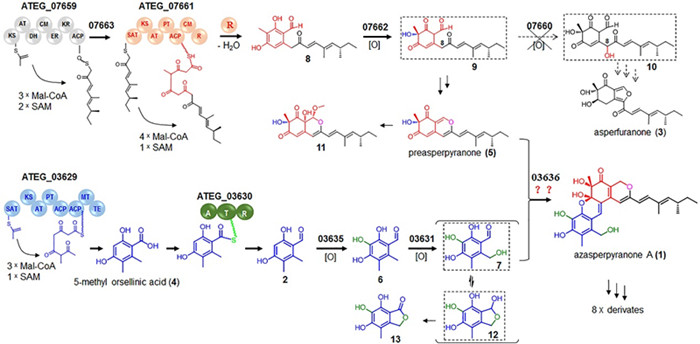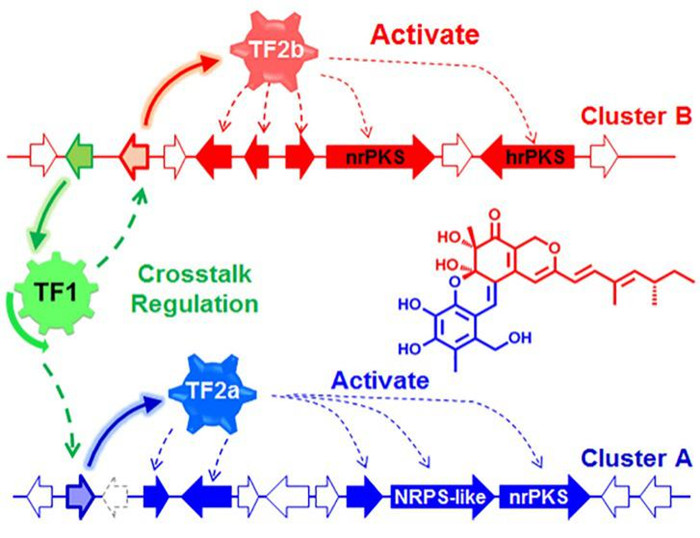Scientists Revealed an Interesting Biosynthetic Mechanism of Natural Products in Filamentous Fungi
Filamentous fungi are known to produce a variety of structurally diverse secondary metabolites with widely ranging biological activities. The backbones of these metabolites are synthesized by core multidomain megasynthases such as polyketide synthase (PKS) and nonribosomal peptide synthetase (NRPS).
An interesting and common phenomenon is the collaborative biosynthesis of one compound by pairing PKS or NRPS enzymes within the same biosynthetic pathway to increase structural diversity and subsequent biological activities, such as statins and echinocandins. Generally, the collaborative core-genes are colocalized in the same biosynthetic gene cluster (BGC) surrounded by other related genes encoding tailoring enzymes, transporters, and regulators in genomes.
Recently, a research team led by Prof. LU Xuefeng from the Qingdao Institute of Bioenergy andBioprocess Technology (QIBEBT) of the Chinese Academy of Sciences (CAS), have successfully revealed a new biosynthetic mechanism of fungal natural products. The findings were released on Angew Chem Int Ed Engl.
They observed that two separate clusters containing four core-enzymes, two nonreducing PKSs, one highly reducing PKS and one NRPS-like, were jointly responsible for the biosynthesis of a class of azaphilones possessing a 6/6/6/6 tetracyclic ring system in Aspergillus terreus.

Figure 1. Proposed biosynthetic pathway of azasperpyranones in A. terreus. The intermediates framed by the dotted line are hypothetical. (Image by HUANG Xuenian)
More interestingly, the biosynthesis is coordinately regulated by crosstalk mechanism between these two gene clusters based on three transcriptional factors, which is rare for fungal secondary metabolites biosynthesis. This is a meaningful mechanism of fungal secondary metabolism, which allows fungi to synthesize more complex compounds and gain new physiological functions. The results provide a new insight into fungal natural product biosynthesis.
This work was supported by National Natural Sciences Foundation of China and Shandong Provincial Natural Science Foundation.

Figure 2. Proposed collaborative model mediated by multiple-level transcriptional regulation. (Image by HUANG Xuenian)
(Text by HUANG Xuenian)
Contact:
CHENG Jing
Qingdao Institute of Bioenergy and Bioprocess Technology, Chinese Academy of Sciences
Tel: 86-532-80662647/80662622
E-mail: chengjing@qibebt.ac.cn